Birdfinding.info ⇒ Uncommon and local across most of its range. Cuban sites where it can be found reliably include Guanahacabibes Peninsula National Park, the Circuito Sur in Sancti Spíritus, the Najasa area, and Alejandro de Humboldt National Park. In the Zapata Swamp area, it may be found anywhere but is most regular at Playa Larga and Guamá. In Turks & Caicos, the Flamingo Pond area of North Caicos seems to be its center of abundance.
Cuban Crow
Corvus nasicus
Endemic to Cuba, its adjacent keys, the Isle of Youth, and Turks & Caicos, where it occurs in various types of woodland, mixed agricultural areas, and towns.
On the Cuban mainland, it is patchily distributed from the Guanahacabibes Peninsula to Guantánamo province. In the Jardines del Rey Archipelago, it is known mainly from Cayos Santa María, Guillermo, and Coco. In Turks & Caicos, it occurs in small numbers on all the main islands except West Caicos.
Identification
A large all-black crow, slightly larger than the rarer Cuban Palm Crow, with a paler, brownish eye, and a slightly thicker head, neck, and bill, but the two are best distinguished by voice.
Cuban Palm Crow is reportedly far more likely than Cuban Crow to forage on the ground, so this habit may be a useful indicator.
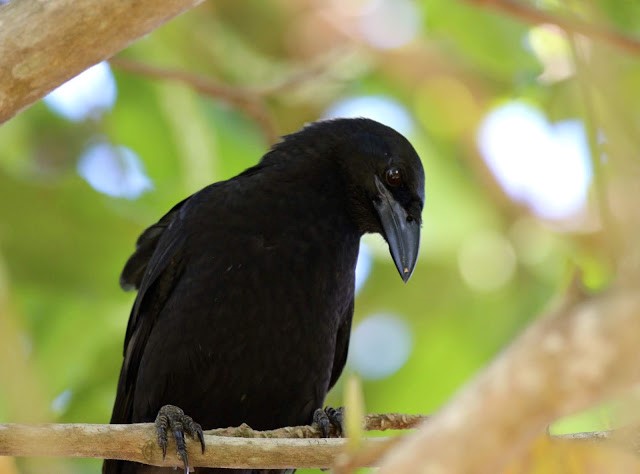
Cuban Crow. (Playa Larga, Matanzas, Cuba; January 1, 2017.) © Jamie Adams
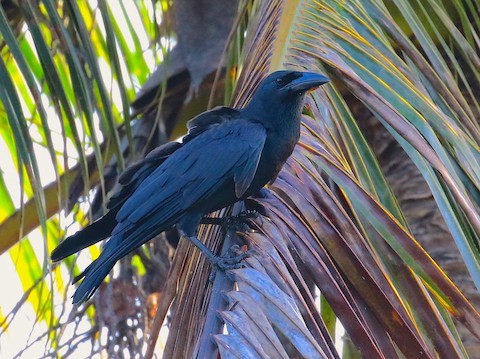
Cuban Crow. (Playa Larga, Matanzas, Cuba; February 22, 2018.) © Arco Huang
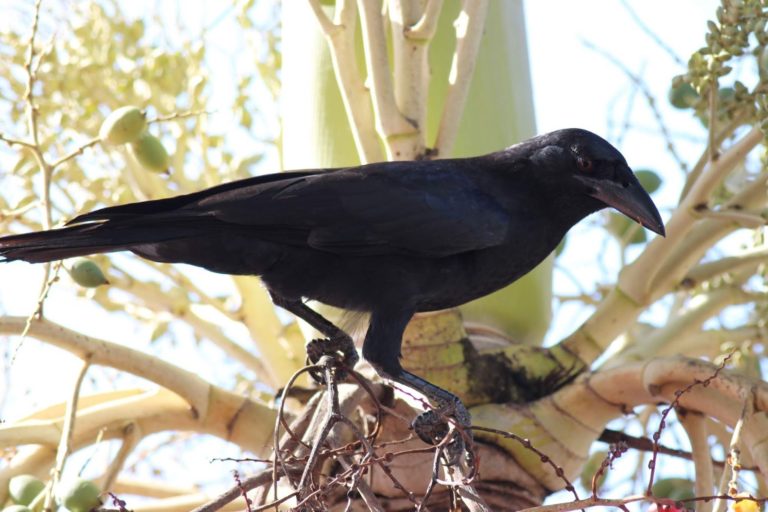
Cuban Crow. (Playa Larga, Matanzas, Cuba; January 1, 2017.) © Jamie Adams
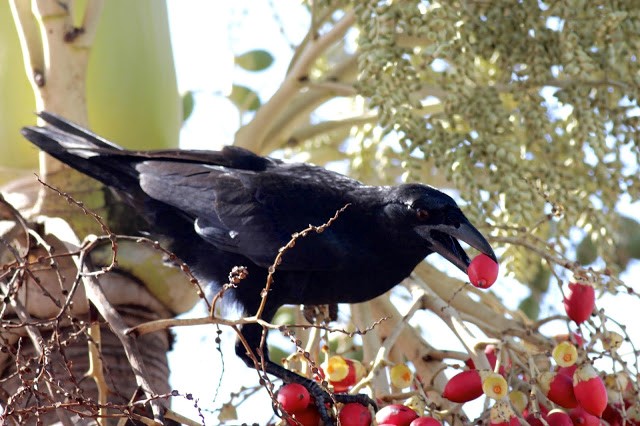
Cuban Crow. (Playa Larga, Matanzas, Cuba; January 1, 2017.) © Jamie Adams
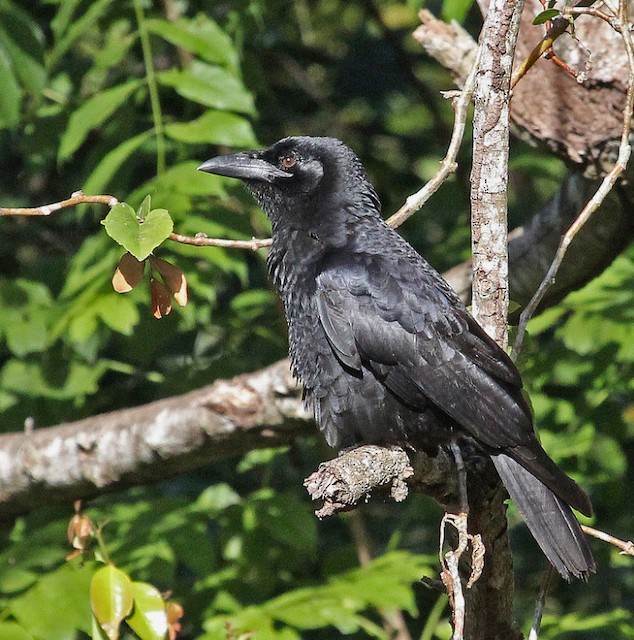
Cuban Crow—note brown eyes. (Matanzas, Cuba; November 15, 2012.) © Jerry Oldenettel
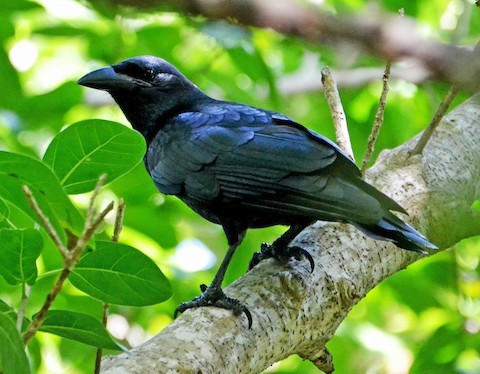
Cuban Crow. (Cabo San Antonio, Pinar del Río, Cuba; November 8, 2016.) © Michael J. Good

Cuban Crow. (Conch Bar, Middle Caicos, Turks & Caicos; April 15, 2010.) © Marbry Hopkins
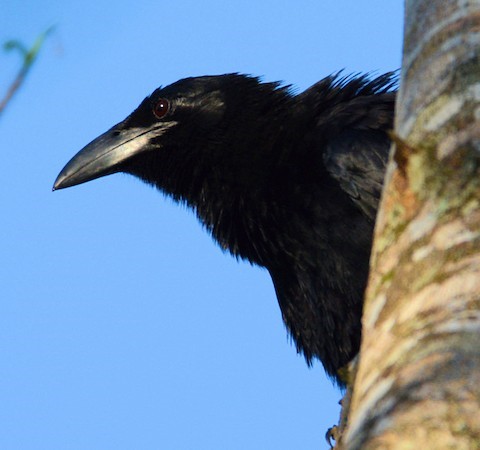
Cuban Crow. (Santo Tomás, Ciénaga de Zapata National Park, Cuba; April 8, 2018.) © Kenneth Butler
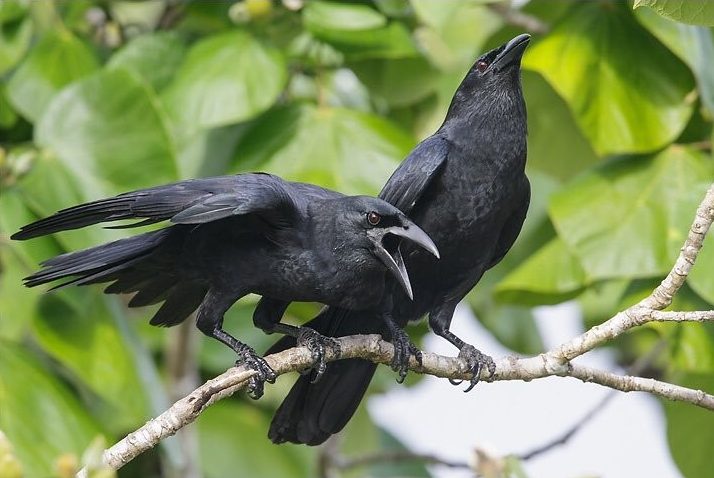
Cuban Crow. (Zapata Peninsula, Matanzas, Cuba; December 1, 2014.) © Glenn Bartley

Cuban Crow. (Playa Larga, Matanzas, Cuba; October 24, 2017.) © Nikolaj Mølgaard Thomsen
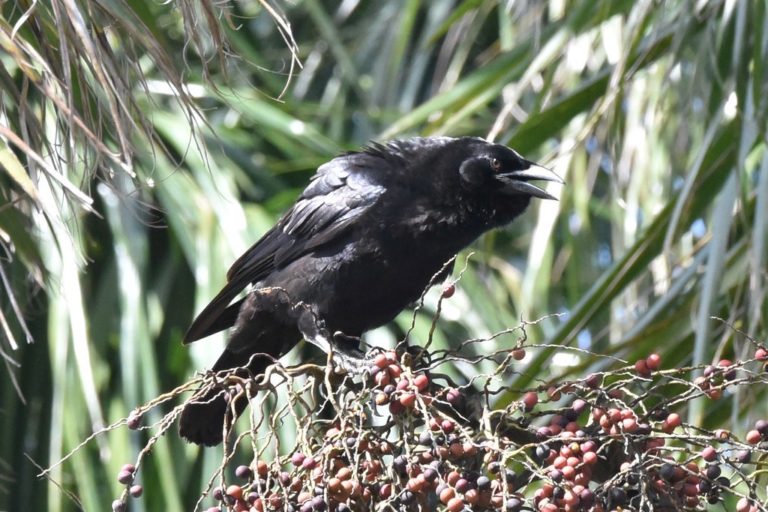
Cuban Crow. (Guamá, Matanzas, Cuba; October 21, 2017.) © Karl-Heinz Dohlich
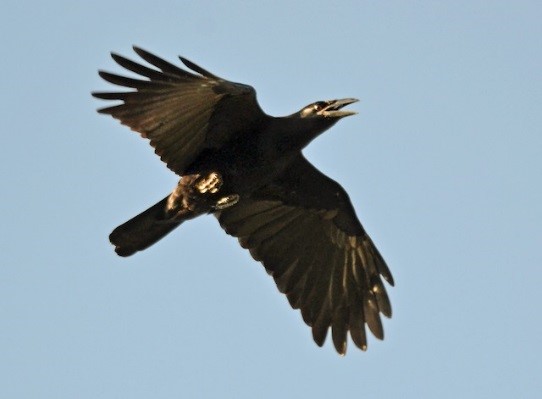
Cuban Crow. (Ecological Station Endemic Trail, Peninsula de Guanahacabibes National Park, Cuba; November 8, 2015.) © Michael J. Good

Cuban Crow. (La Boca Cocodrilo Farm, Matanzas, Cuba; April 10, 2019.) © Michael J. Good
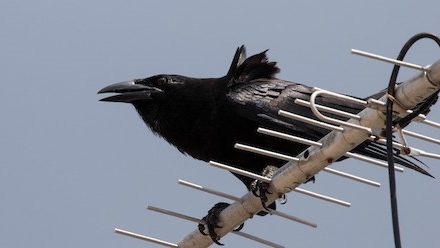
Cuban Crow. (Pálpite, Matanzas, Cuba; March 21, 2018.) © Mel Senac
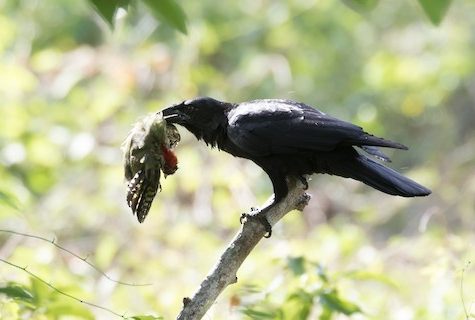
Cuban Crow, carrying a Cuban Green Woodpecker. (Sendero de las Aves, Sierra del Chorillo, Camagüey, Cuba; April 13, 2017.) © Robert Lewis
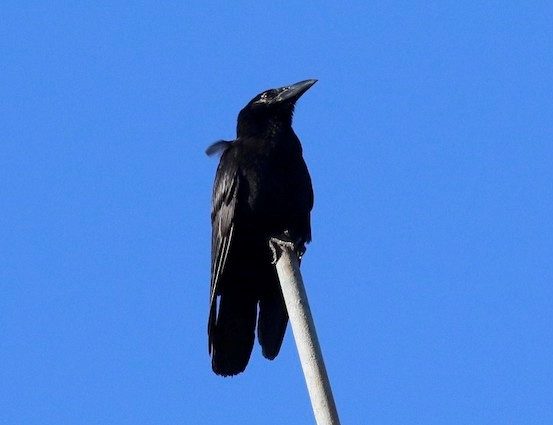
Cuban Crow. (Cueva de los Peces, Matanzas, Cuba; November 30, 2017.) © Knut Hansen
Notes
Monotypic species.
References
BirdLife International. 2017. Corvus nasicus (amended version of 2016 assessment). The IUCN Red List of Threatened Species 2017: e.T22706010A118781571. http://dx.doi.org/10.2305/IUCN.UK.2017-3.RLTS.T22706010A118781571.en. (Accessed June 25, 2019.)
eBird. 2019. eBird: An online database of bird distribution and abundance. Cornell Lab of Ornithology, Ithaca, N.Y. http://www.ebird.org. (Accessed June 25, 2019.)
Garrido, O.H, and A. Kirkconnell. 2000. Field Guide to the Birds of Cuba. Cornell University Press, Ithaca, N.Y.
Marzluff, J. 2019. Cuban Crow (Corvus nasicus). In Handbook of the Birds of the World Alive (J. del Hoyo, A. Elliott, J. Sargatal, D.A. Christie and E. de Juana, eds.). Lynx Edicions, Barcelona. https://www.hbw.com/node/60792. (Accessed June 25, 2019.)
Raffaele, H., J. Wiley, O. Garrido, A. Keith, and J. Raffaele. 1998. A Guide to the Birds of the West Indies. Princeton University Press, Princeton, N.J.
